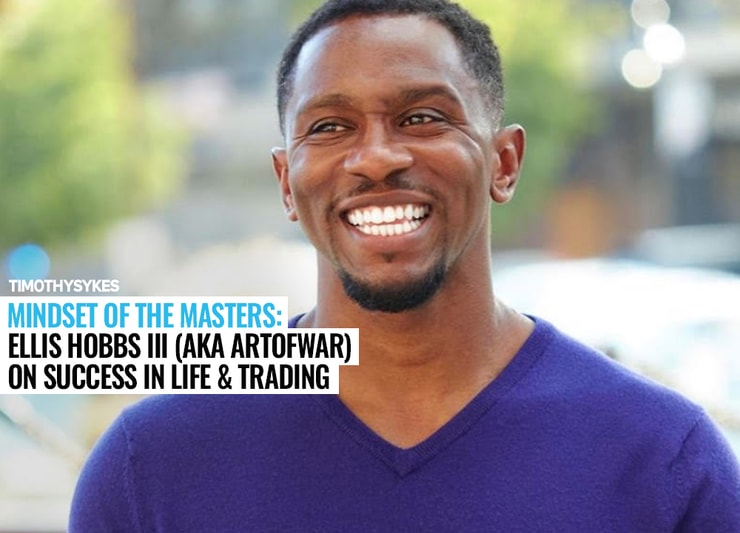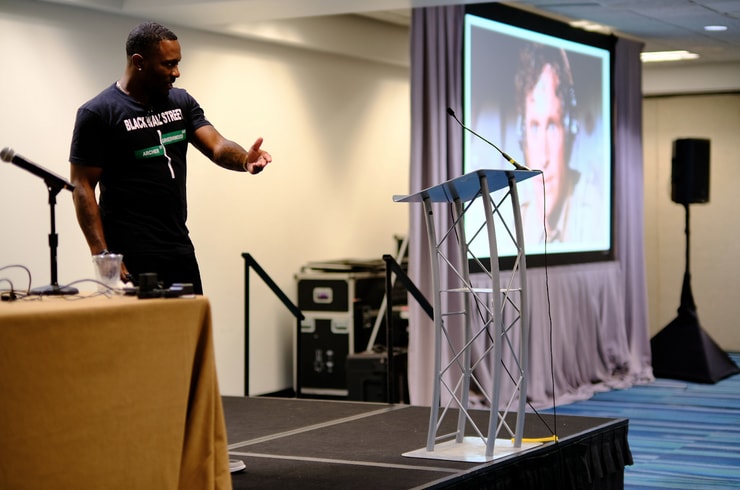Anyone can learn to trade the market profitably.
Quality training will get you to your goals…IF you put in the work.
No one knows this better than professional athletes.
To get to the top, they GIVE EVERYTHING to the game.
Former NFL Star Ellis Hobbs joined my MILLIONAIRE CHALLENGE in 2016.
But he wasn’t my first NFL student.
That was Plaxico Burress.
Burress never treated trading like a business.
So, he got out what he put in…very little.
For non-NFL junkies…
Ellis Hobbs set the record for the longest punt return in 2007.
Plaxico Burress caught the game-winning touchdown that same year while defended by Hobbs.
Unlike Burress, Hobbs realized that trading couldn’t be a part-time hobby.
If he wanted to succeed, it meant treating it with the respect it deserved.
By the time the 2020 bull market began, Hobbs already had four years of solid study under his belt.
In 2020, Ellis netted $220,000 in gains, tacking on another $204,000 in 2021.
Burress may have one on the field…

Today, I’m proud to call him my student.
He gives back to his local community and traders alike.
So, don’t be surprised if you catch him in the chat room trading right alongside you…
Or offering up some tips in a live webinar.
As you might imagine, Ellis leads a busy life, something we all can relate to.
Business Insider wrote an article on his trading journey.
While they covered the highlights, I wanted to give you a taste of what Ellis teaches when he steps up to the mic.
You’ll be surprised at how practical and intuitive his approach is.
Ellis’ Process

Ellis trades stocks long and short.
But he doesn’t like to make things complicated.
In 2020 and early 2021, he’d take long trades on multi-month runners leveraging the 7-Step Penny Stock Framework.
Here’s a great example he offered in a recent webinar.
Ellis brought up a chart of Summit Therapeutics Inc. (NASDAQ: SMMT).
More Breaking News
- Soaring or Stalling? What’s Next for Denison Mines Corporation Stock?
- Is SoFi Technologies on the Verge of a Breakout After Hitting the 10M Member Milestone?
- Quantum-Si’s Stock Skyrockets: Analyzing Key Performance Drivers
He laid out his process to identify multi-day runners which includes looking for the following:
- A stock with a history of running multiple days
- Up 20%, 50%, 100% in the first two or three days or within the history before
- Heavy volume
Once that’s complete, his job is to find the pattern with support and resistance.
Ellis candidly said he didn’t play the initial run. That doesn’t mean there aren’t trades, just that isn’t his style.
Stocks are like humans. They can only run so far.
Eventually, traders will want to take profits, move on to something else, or find other reasons to stop buying.
Some last longer than others. But most go 3-4 days.
Then he looks for the first red day to flag a momentum shift.
Zoomed in on SMMT, this is what it looks like.
Now, when he talks about the first red day, he’s describing the intraday price action.
His initial entry was near the $4.00 whole number.
He knew he could risk the recent highs near $4.50 because there was range to the downside.
Shares ran from $0.6 to $4.50.
Ellis looked for a momentum shift, took the trade as close to the highs as he could, and shorted for lower prices.
As the stock declined, Ellis took profits along the way.
Risk management is key for any successful trader, longs or shorts.
You have to know where your stop loss, profit target, and entry point before jumping in.
Just as important, traders need to keep their size small enough to keep them in the trade.
Taking outsized positions makes folks nervous and less likely to give trades a chance to work.
Now, Ellis also pointed out that long and short traders need to be aware of key developments like short sale restrictions.
Once a stock drops 10% or more from the prior day’s close, it’s hit with a short sale restriction that sticks for the entire day.
The rule only permits traders to short a stock on upticks once implemented.
Essentially, market orders for short sales disappear.
The point of this nuance is knowing that it reduces downward pressure from short sellers.
Coupled with other momentum signals, long traders can use this to look for momentum shifts in the other direction.
If you go back to the chart, you’ll notice that Ellis covered around $3.60, roughly 10% below the prior day’s close.
That’s not a coincidence, it’s preparation!
Everything discussed here only covers 20 minutes of Ellis’ recent hour long webinar.
So, when I tell you that the Millionaire Challenge is content-rich, I mean it.
I want to help everyone craft their own strategies and process to profitably trade the market and achieve their goals.
Do yourself a favor and sign up for my Millionaire Challenge.
–Tim



Leave a reply